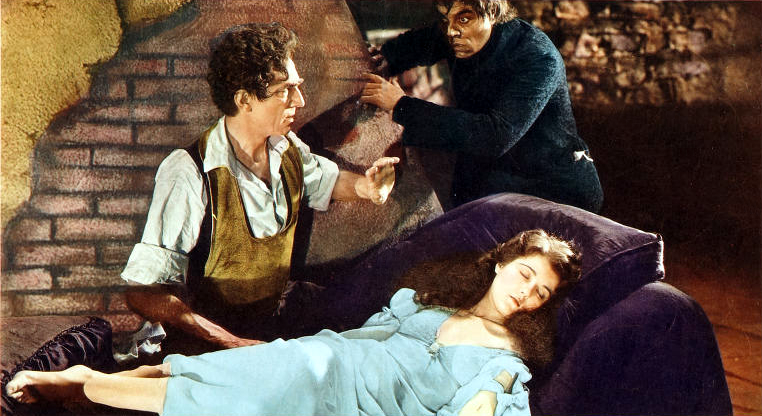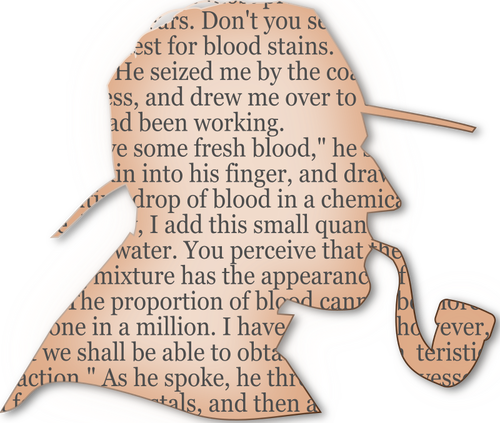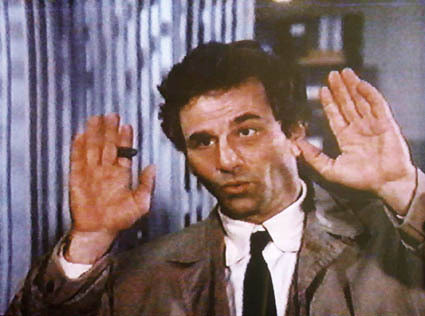“Where do your ideas come from?” is another one of those perennial questions. The late, great Douglas Adams, would always answer “From a small mail order company in Cleveland”, which serves to demonstrate how difficult this question is to answer. In the case of murder mysteries, however, there is a huge raft of media in existence which can serve as a template or a springboard for a new story. Stories about murder have been around for almost as long as the written word; one only needs to peruse the book of Genesis (which dates back to the 6th and 5th centuries BC) to learn of Cain slaying his brother Abel, although there isn’t much mystery in that story, as the scipture plainly states:
“and when they were in the field Cain rose against Abel his brother and killed him.”
Genesis 4:8
Detective fiction, where a crime or crimes are committed and then investigated and solved by an interested party, is a more modern phenomenon, usually ascribed as originally a 19th century invention.

Detective fiction in the English-speaking world is widely considered to have begun in 1841 with the publication of Edgar Allen-Poe’s The Murders in the Rue Morgue featuring the the eccentric and brilliant Le Chevalier C. Auguste Dupin, who solves the mystery of the brutal murder of two women, Madame L’Espanaye and her daughter, using a logical process, which Poe calls “ratiocination”.
The grandfather of English detective fiction, however, is Wilkie Collins (1824–1889) whose novels The Woman in White and The Moonstone are considered to be the first English detective novels. In The Woman in White, the investigator,Walter Hartright, employs many of the sleuthing techniques used by detectives in later novels to investigate the various mysyteries he encounters, whilst in The Moonstone, Franklin Blake, the “gentleman detective” investigates the theft of a valuable diamond. T. S. Eliot called The Moonstobe “the first, the longest, and the best of modern English detective novels” and Dorothy L. Sayers praised it as “probably the very finest detective story ever written”. I would personally disagree with Sayers on this, but there is little doubt that following itrs publication in 1868, an explosion of detective fiction followed in Britain, perhaps in part due to the sensationalism of real-life cases, such as Jack the Ripper, an unidentified serial killer active in the largely in and around the Whitechapel district of London in 1888.

Much of 19th-century detective fiction was published in periodicals, the form of Victorian detective fiction being primarily the short story. In 1887, a new detective burst upon the scene, with the appearance of Sherlock Holmes in A Study in Scarlet. Conan-Doyle’s famous creation was the archetypal detective hero; he was eccentric, irascible, focused, tight-lipped and of course brilliant. The Holmes stories also introduced another important trope to the genre in the form of Dr Watson, Holmes’ loyal sidekick, who by serving as the narrator for most of the stories, becomes the eyes and ears of the reader, describing possible clues without giving away their significance and often sharing his frustration in Holmes’ reluctance to fully reveal what he has deduced. Holmes’ popularity became widespread with the first series of short stories in The Strand Magazine, beginning with A Scandal in Bohemia in 1891, so much so, that when Conan-Doyle tried to kill off his creation in a final battle with the criminal mastermind Professor James Moriarty in The Final Problem public pressure forced him to bring him back in The Adventure of the Empty House in 1894. Conan-Doyle continued to publish stories until 1927, by which time his detective explicitly appeared in four novels and 56 short stories.
The Golden Age of Detective Fiction was the period betweeen the World Wars, where a number of writers rose to prominence, notably Agatha Christie, Dorothy L. Sayers, Margery Allingham, Carter Dickson, GK Chesterton and Ngaio Marsh. Of these, Christie and her creations Hercule Poirot and Miss Marple, remain the most well-known, although Allingham’s Albert Campion and Chesterton’s Father Brown have all featured in their own TV series and Sayers’ Lord Peter Wimsey and Marsh’s Roderick Alleyn fit squarely into the category of “gentleman detective” which became popular during this period. Many of these writers’ stories conformed to the rules laid down by Monsignor Ronald A. Knox (1888-1957), namely:
- The criminal must be someone mentioned in the early part of the story, but must not be anyone whose thoughts the reader has been allowed to follow.
- All supernaural or preternatural agencies are ruled out as a matter of course.
- Not more than one secret room or passage is allowable.
- No hitherto undiscovered poisons may be used, nor any appliance which will need a long scientific explanation at the end.
- No Chinaman must figure in the story.
- No accident must ever help the detective, nor must he ever have an unaccountable intuition which proves to be right.
- The detective must not himself commit the crime
- The detective must not light on any clues which are not instantly produced for the inspection of the reader.
- The stupid friend of the detective, the Watson, must not conceal any thoughts which pass through his mind; his intelligence must be slightly, but very slightly, below that of the average reader.
- Twin brothers, and doubles generally, must not appear unless we have been duly prepared for them
Although, some of the more notable stories from this period are notable and perhaps memorable because they break one or more of these rules in remarkable ways – for example Christie’s The Murder of Roger Ackroyd, the solution of which is eminently guesssable by the experienced reader, despite the rule breaking.

Christie continued to produce stories until her death in 1976, but the tradition of her and her peers continued, often through the media of film and television. New sub-genres emerged, including the Police Procedural, where the investigating officer follows his or her instincts and the contraints of the legal system to investigate the crime, often with elements of forensic science being explored or the hard-boiled fiction of Raymond Chandler, Dashiell Hammett et al. Focus upon the detective’s modus operendi also lead to the “howcatchum” mystery as frequently featured in the brilliant Columbo TV series. In these stories, the viewer normally knows who committed the crime, but the mystery relies on the way in which the shambolic, seemingling incompetent detective exposes the truth behind the crime.
More recently, the seb-genre of Nordic or Scandi-noir has risen in popularity, featuring stories usually written from a police point of view and set in Scandinavia or one of the other Nordic countries. Often set in bleak landscapes and avoiding metaphor, authors such as Henning Mankell, Peter Høeg, Jørn Lier Horst, Stieg Larsson and Jo Nesbø epistomise this style of detective fiction, giving rise to popular TV series such as The Killing, The Bridge, Trapped and Bordertown. The bleak, isolated police procedural has travelled beyond Scandinavia, as in Anne Cleves’ Shetland series and S4C’s Hinterland.
With such a rich vein of detective fiction already established, and a huge selection of sleuths so well described and known, there is already a vast back-catalogue of ideas, tropes and themes to draw on when writing a murder mystery. Anything that Murder to Measure can produce is sure to draw upon the myriad of books, films and TV series which have entertained so many over the last 200 years or so, although I hope that the are still plenty of new twists and red herrings ripe for exploitation.